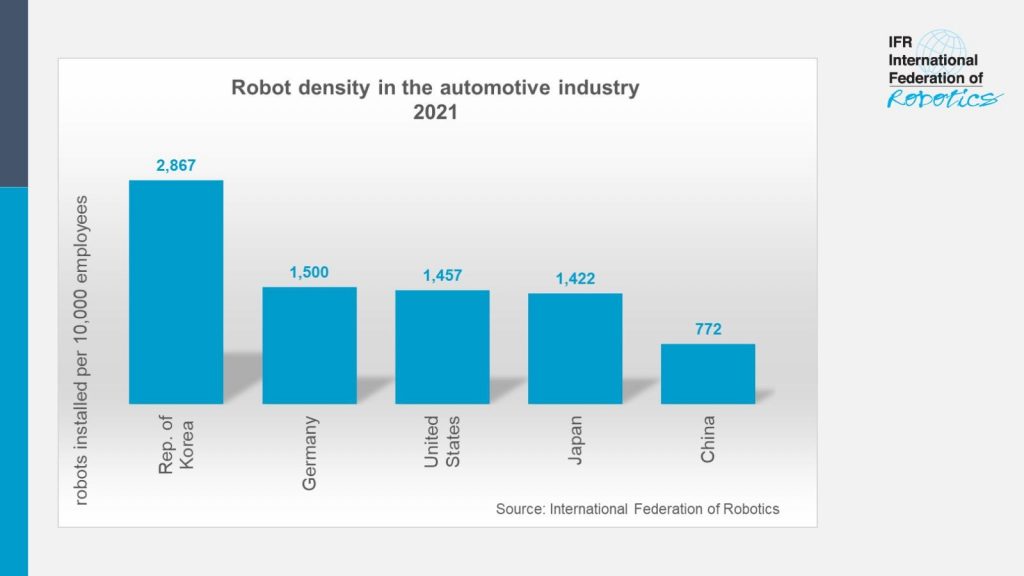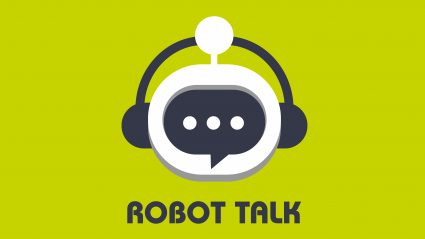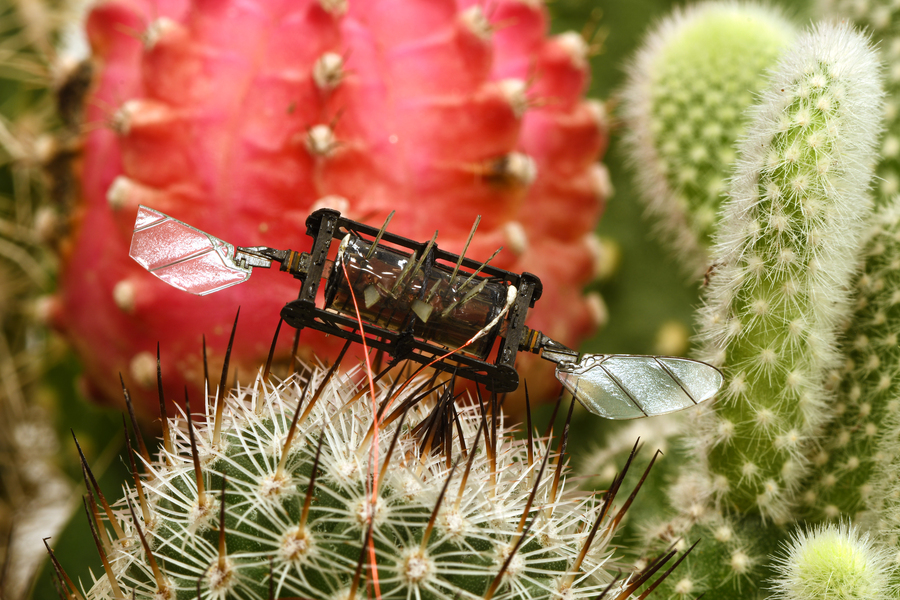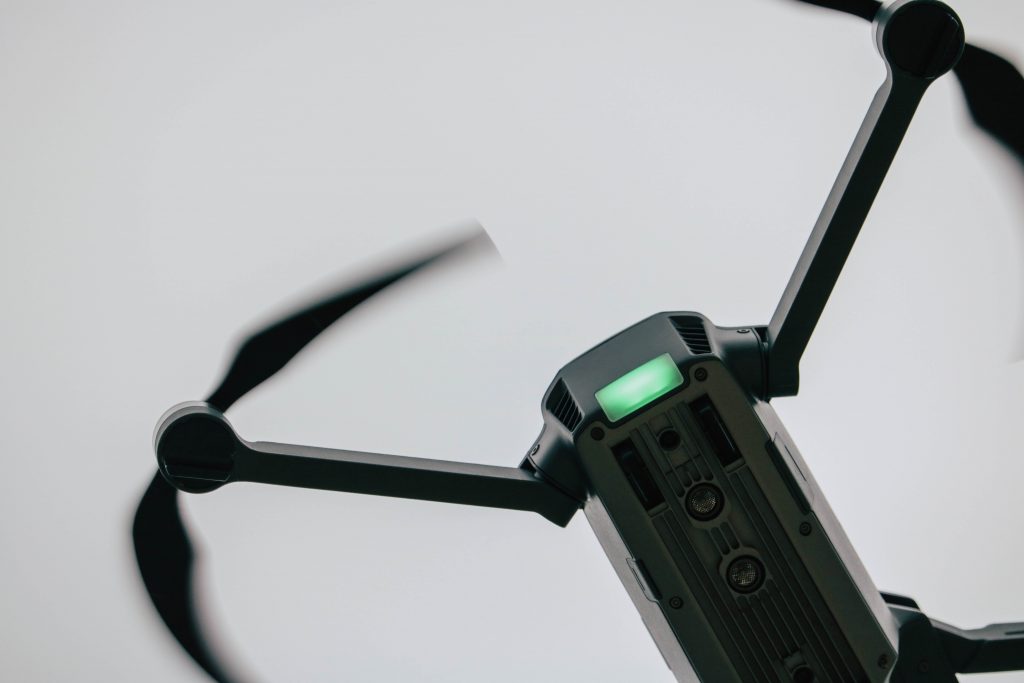One million robots work in car industry worldwide – new record
The automotive industry has the largest number of robots working in factories around the world: Operational stock hit a new record of about one million units. This represents about one third of the total number installed across all industries.

“The automotive industry effectively invented automated manufacturing,” says Marina Bill, President of the International Federation of Robotics. “Today, robots are playing a vital role in enabling this industry’s transition from combustion engines to electric power. Robotic automation helps car manufacturers manage the wholesale changes to long-established manufacturing methods and technologies.”
Robot density in automotive
Robot density is a key indicator which illustrates the current level of automation in the top car producing economies: In the Republic of Korea, 2,867 industrial robots per 10,000 employees were in operation in 2021. Germany ranks in second place with 1,500 units followed by the United States counting 1,457 units and Japan with 1,422 units per 10,000 workers.
The world´s biggest car manufacturer, China, has a robot density of 772 units, but is catching up fast: Within a year, new robot installations in the Chinese automotive industry almost doubled to 61,598 units in 2021- accounting for 52% of the total 119,405 units installed in factories around the world.
Electric vehicles drive automation
Ambitious political targets for electric vehicles are forcing the car industry to invest: The European Union has announced plans to end the sale of air-polluting vehicles by 2035. The US government aims to reach a voluntary goal of 50% market share for electric vehicle sales by 2030 and all new vehicles sold in China must be powered by “new energy” by 2035. Half of them must be electric, fuel cell, or plug-in hybrid – the remaining 50%, hybrid vehicles.
Most automotive manufacturers who have already invested in traditional “caged” industrial robots for basic assembling are now also investing in collaborative applications for final assembly and finishing tasks. Tier-two automotive parts suppliers, many of which are SMEs, are slower to automate fully. Yet, as robots become smaller, more adaptable, easier to program, and less capital-intensive this is expected to change.
Robot Talk Episode 42 – Thom Kirwan-Evans
 Claire chatted to Thom Kirwan-Evans from Origami Labs all about computer vision, machine learning, and robots in industry.
Claire chatted to Thom Kirwan-Evans from Origami Labs all about computer vision, machine learning, and robots in industry.
Thom Kirwan-Evans is a co-founder at Origami Labs where he applies the latest AI research to solve complex real world problems. Thom started as a physicist at Dstl working with camera systems before moving to an engineering consultancy and then setting up his own company last year. A keen runner and father of two, a key aim in starting his business was a good work-life balance.
Consumers are Ready for a Robot-Assisted World
AMRs in Fleet Operation and Test Deployment
Resilient bug-sized robots keep flying even after wing damage

MIT researchers have developed resilient artificial muscles that can enable insect-scale aerial robots to effectively recover flight performance after suffering severe damage. Photo: Courtesy of the researchers
By Adam Zewe | MIT News Office
Bumblebees are clumsy fliers. It is estimated that a foraging bee bumps into a flower about once per second, which damages its wings over time. Yet despite having many tiny rips or holes in their wings, bumblebees can still fly.
Aerial robots, on the other hand, are not so resilient. Poke holes in the robot’s wing motors or chop off part of its propellor, and odds are pretty good it will be grounded.
Inspired by the hardiness of bumblebees, MIT researchers have developed repair techniques that enable a bug-sized aerial robot to sustain severe damage to the actuators, or artificial muscles, that power its wings — but to still fly effectively.
They optimized these artificial muscles so the robot can better isolate defects and overcome minor damage, like tiny holes in the actuator. In addition, they demonstrated a novel laser repair method that can help the robot recover from severe damage, such as a fire that scorches the device.
Using their techniques, a damaged robot could maintain flight-level performance after one of its artificial muscles was jabbed by 10 needles, and the actuator was still able to operate after a large hole was burnt into it. Their repair methods enabled a robot to keep flying even after the researchers cut off 20 percent of its wing tip.
This could make swarms of tiny robots better able to perform tasks in tough environments, like conducting a search mission through a collapsing building or dense forest.
“We spent a lot of time understanding the dynamics of soft, artificial muscles and, through both a new fabrication method and a new understanding, we can show a level of resilience to damage that is comparable to insects,” says Kevin Chen, the D. Reid Weedon, Jr. Assistant Professor in the Department of Electrical Engineering and Computer Science (EECS), the head of the Soft and Micro Robotics Laboratory in the Research Laboratory of Electronics (RLE), and the senior author of the paper on these latest advances. “We’re very excited about this. But the insects are still superior to us, in the sense that they can lose up to 40 percent of their wing and still fly. We still have some catch-up work to do.”
Chen wrote the paper with co-lead authors Suhan Kim and Yi-Hsuan Hsiao, who are EECS graduate students; Younghoon Lee, a postdoc; Weikun “Spencer” Zhu, a graduate student in the Department of Chemical Engineering; Zhijian Ren, an EECS graduate student; and Farnaz Niroui, the EE Landsman Career Development Assistant Professor of EECS at MIT and a member of the RLE. The article appeared in Science Robotics.
Robot repair techniques
Using the repair techniques developed by MIT researchers, this microrobot can still maintain flight-level performance even after the artificial muscles that power its wings were jabbed by 10 needles and 20 percent of one wing tip was cut off. Credit: Courtesy of the researchers.
The tiny, rectangular robots being developed in Chen’s lab are about the same size and shape as a microcassette tape, though one robot weighs barely more than a paper clip. Wings on each corner are powered by dielectric elastomer actuators (DEAs), which are soft artificial muscles that use mechanical forces to rapidly flap the wings. These artificial muscles are made from layers of elastomer that are sandwiched between two razor-thin electrodes and then rolled into a squishy tube. When voltage is applied to the DEA, the electrodes squeeze the elastomer, which flaps the wing.
But microscopic imperfections can cause sparks that burn the elastomer and cause the device to fail. About 15 years ago, researchers found they could prevent DEA failures from one tiny defect using a physical phenomenon known as self-clearing. In this process, applying high voltage to the DEA disconnects the local electrode around a small defect, isolating that failure from the rest of the electrode so the artificial muscle still works.
Chen and his collaborators employed this self-clearing process in their robot repair techniques.
First, they optimized the concentration of carbon nanotubes that comprise the electrodes in the DEA. Carbon nanotubes are super-strong but extremely tiny rolls of carbon. Having fewer carbon nanotubes in the electrode improves self-clearing, since it reaches higher temperatures and burns away more easily. But this also reduces the actuator’s power density.
“At a certain point, you will not be able to get enough energy out of the system, but we need a lot of energy and power to fly the robot. We had to find the optimal point between these two constraints — optimize the self-clearing property under the constraint that we still want the robot to fly,” Chen says.
However, even an optimized DEA will fail if it suffers from severe damage, like a large hole that lets too much air into the device.
Chen and his team used a laser to overcome major defects. They carefully cut along the outer contours of a large defect with a laser, which causes minor damage around the perimeter. Then, they can use self-clearing to burn off the slightly damaged electrode, isolating the larger defect.
“In a way, we are trying to do surgery on muscles. But if we don’t use enough power, then we can’t do enough damage to isolate the defect. On the other hand, if we use too much power, the laser will cause severe damage to the actuator that won’t be clearable,” Chen says.
The team soon realized that, when “operating” on such tiny devices, it is very difficult to observe the electrode to see if they had successfully isolated a defect. Drawing on previous work, they incorporated electroluminescent particles into the actuator. Now, if they see light shining, they know that part of the actuator is operational, but dark patches mean they successfully isolated those areas.

The new research could make swarms of tiny robots better able to perform tasks in tough environments, like conducting a search mission through a collapsing building or dense forest. Photo: Courtesy of the researchers
Flight test success
Once they had perfected their techniques, the researchers conducted tests with damaged actuators — some had been jabbed by many needles while other had holes burned into them. They measured how well the robot performed in flapping wing, take-off, and hovering experiments.
Even with damaged DEAs, the repair techniques enabled the robot to maintain its flight performance, with altitude, position, and attitude errors that deviated only very slightly from those of an undamaged robot. With laser surgery, a DEA that would have been broken beyond repair was able to recover 87 percent of its performance.
“I have to hand it to my two students, who did a lot of hard work when they were flying the robot. Flying the robot by itself is very hard, not to mention now that we are intentionally damaging it,” Chen says.
These repair techniques make the tiny robots much more robust, so Chen and his team are now working on teaching them new functions, like landing on flowers or flying in a swarm. They are also developing new control algorithms so the robots can fly better, teaching the robots to control their yaw angle so they can keep a constant heading, and enabling the robots to carry a tiny circuit, with the longer-term goal of carrying its own power source.
“This work is important because small flying robots — and flying insects! — are constantly colliding with their environment. Small gusts of wind can be huge problems for small insects and robots. Thus, we need methods to increase their resilience if we ever hope to be able to use robots like this in natural environments,” says Nick Gravish, an associate professor in the Department of Mechanical and Aerospace Engineering at the University of California at San Diego, who was not involved with this research. “This paper demonstrates how soft actuation and body mechanics can adapt to damage and I think is an impressive step forward.”
This work is funded, in part, by the National Science Foundation (NSF) and a MathWorks Fellowship.
Robot caterpillar demonstrates new approach to locomotion for soft robotics
Biodegradable artificial muscles: Going green in the field of soft robotics
How Robotics Can Help Global Renewable Energy Goals & Create Jobs
Detection of methanol using a soft photonic crystal robot
A hybrid unicycle that can move on the ground and fly
The Innovation Behind the Orbital Flex™ Design Gear Solution
How drones for organ transportation are changing the healthcare industry

Source: Unsplash
According to statistics, the healthcare drone industry has witnessed a dramatic surge in the last couple of years. In 2020, the market grew 30% and is expected to grow from $254 million in 2021 to $1,5 billion in 2028. The most common use case for healthcare drones is the delivery of medical supplies and laboratory samples.
However, it appears that in 2022, new ways of using drones have become available. Research groups in the USA have completed test drone organ delivery operations and have done so successfully. How will the proliferation of organ transportation with drones influence the healthcare industry?
What is an organ transportation drone?
Before we talk about how medical delivery drones may influence the healthcare industry, it’s worth investigating what they are and how they work.
Drones are unmanned aerial vehicles (UAVs) that can be operated remotely or that can fly autonomously using on-board sensors and GPS. The smallest drones can be as small as 30sm in length and weigh about 500 grams. The largest can reach the size of a track and carry weights up to 4.5 tons.
Drones for organ transportation are somewhere in the middle. Organs are usually delivered in batches and can actually be quite heavy with all the ecosystem that is necessary to maintain them in the desired condition. Organ delivery drones are able to carry freight up to 180kg. These drones are designed to transport vital organs such as hearts, kidneys, and livers from one location to another in a safe and efficient manner.
Drones are able to transport objects on relatively short distances. While iner-city and inter-city delivery is possible it’s probably too early to talk about international transportation. This limitation can be explained by the difficulties of piloting the drone as well as by the nature of organ transplantation as such that is an extremely timely matter.
Why are organ transportation drones so important?
Right now organ delivery drones are still on the stage of development and testing. However, a survey conducted among surgeons in the USA has shown that this innovation may have high importance for the field.
A survey by University of Maryland Medical Center in Baltimore has shown that 76.4% of organ transplantation surgeons believe that cold ischaemia time reduction to 8 hours, achieved via the use of organ delivery drones, would increase organ acceptance rates. In fact, time to delivery reduction is one of the most significant benefits of using drones for the delivery of organs. After the organs have been extracted from the body, they only have 4 to 72 hours to be transplanted. The longer the waiting time the higher are the chances of the organ failing upon transplantation. Only 16% of surgeons believed the current transportation system is adequate for organ delivery needs. Clara Guerrero, director of communications for the Texas Organ Sharing Alliance, says in the article for San Antonio Report, ‘You’re saving hours. What that also means is the organ is more viable. That person, they don’t have to wait so long for the organ to arrive. We’re saving lives faster and sooner’.
Another research has investigated the potential drawbacks and benefits of using organ transportation drones as opposed to delivery with commercial aircrafts and charter flights. They have used a modified, six-rotor UAS to model organ delivery. During the transportation process, they’ve measured the temperature and vibration levels. This is what they write:
“Temperatures remained stable and low (2.5 °C). Pressure changes (0.37–0.86 kPa) correlated with increased altitude. Drone travel was associated with less vibration (<0.5 G) than was observed with fixed-wing flight (>2.0 G). Peak velocity was 67.6 km/h (42 m/h). Biopsies of the kidney taken prior to and after organ shipment revealed no damage resulting from drone travel. The longest flight was 3.0 miles, modeling an organ flight between two inner city hospitals.”
In the future, the use of drones for organ transportation could greatly increase as the technology improves. For example, advances in autonomous flight systems and improved battery technology could make it possible for drones to fly longer distances and reach more remote locations. Additionally, the development of drone delivery networks could make it possible to deliver organs to hospitals and other healthcare facilities in a matter of minutes, reducing the time that vital organs are outside of a human body.
Who makes drones for organ transportation?
Currently, there are several companies in the world that are working on making organ transplantation a reality.
One such company is Zipline, based in California, USA. The company has developed a drone specifically for the transportation of medical supplies, including blood and organs. The drone is able to fly at high speeds and cover long distances, making it ideal for transporting organs between hospitals and other medical facilities.
Another company, Matternet, is also based in California and it has developed a similar drone for medical deliveries. This drone is used to deliver diagnostic samples in Switzerland and can be applied for carrying small organs as well.
A Canadian company Unither Bioélectronique specializes in quick and efficient delivery methods for organ transportation such as drones. The Indian government is developing an organ delivery drone system together with.
In China, a company called EHang has developed a drone that can transport organs and other medical supplies. This drone is able to fly at high speeds and cover long distances, making it ideal for transporting organs between hospitals and other medical facilities.
In Europe, a company called Volocopter, based in Germany, has developed a drone specifically for the transportation of organs. The drone is equipped with advanced navigation systems and can fly at high speeds, making it ideal for transporting organs between hospitals and other medical facilities.
In India, the first human organ delivery drone developed by MGM Healthcare. It can be used to transport organs with a maximum distance of 20 kilometers.
Conclusion
The use of organ drone delivery represents a significant breakthrough in the field of organ transplantation. This innovative technology has the potential to revolutionize the way organs are transported, making the process faster, more efficient, and more reliable than ever before. By reducing the time it takes to deliver organs to transplant centers, drones could help save countless lives by ensuring that patients receive the organs they need in a timely manner. Moreover, by reducing the risk of organ damage during transport, drones could improve the success rates of organ transplants, leading to better outcomes for patients. With the ongoing development of organ drone delivery technology, we can look forward to a future where organ transplantation is more accessible, reliable, and effective than ever before.